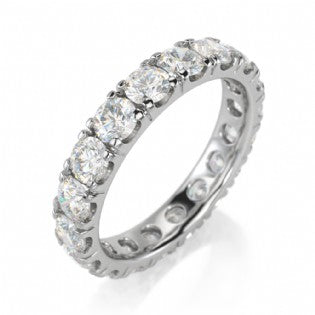A carat serves as a measure for weighing diamonds, with one carat equaling 200 milligrams. Typically, carat weight is expressed in points, where one carat comprises 100 points. For instance, 0.50 carats can also be denoted as 50 points or half a carat. The value of a diamond is primarily determined by its carat weight. Nevertheless, differing quality assessments can lead to significantly varied values for diamonds with the same carat weight.
Diamonds exhibit a broad spectrum of colors, each impacting its rarity and, subsequently, its value. The prevalent color-grading scale commences with the letter D, representing the purest and whitest diamond. Diamonds nearing the top of this scale are appraised higher than those with a hint of yellow. It's worth noting that fancy color diamonds, ranging from blue to green to vivid yellow, are exceptionally scarce and valuable, prized primarily for their distinct hues.
Contrary to common belief, a diamond's cut isn't related to its shape but pertains to its depth, width, and facet consistency. The brilliance of a diamond hinges on the quality of its cut. A skillfully cut stone unleashes vibrant colors from within by maximizing light entry through the table, reflecting it back to the viewer. In contrast, a poorly cut diamond absorbs light through the table and emits it from the sides, diminishing the sparkle or fire.
Diamond clarity is determined through the inspection of internal characteristics, known as inclusions, and external features called blemishes. These unique attributes originate during the diamond's formation under intense heat and pressure.
When assessing a diamond's clarity, several aspects are taken into account: these encompass the number, dimensions, relief, characteristics, and placement of imperfections, as well as their impact on the diamond's overall aesthetic. While absolute flawlessness is rare in diamonds, the closer a diamond comes to perfection, the higher its clarity rating.





